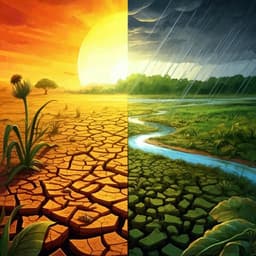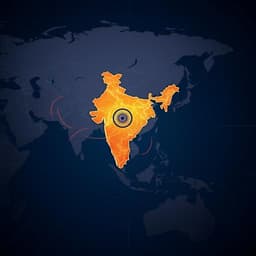
Earth Sciences
Anthropogenic warming and intraseasonal summer monsoon variability amplify the risk of future flash droughts in India
V. Mishra, S. Aadhar, et al.
Flash droughts threaten agriculture in India, particularly during the summer monsoon. Researchers Vimal Mishra, Saran Aadhar, and Shanti Shwarup Mahto reveal alarming projections that suggest a significant increase in drought events due to climate change and monsoon variability.
~3 min • Beginner • English
Related Publications
Explore these studies to deepen your understanding of the subject.







